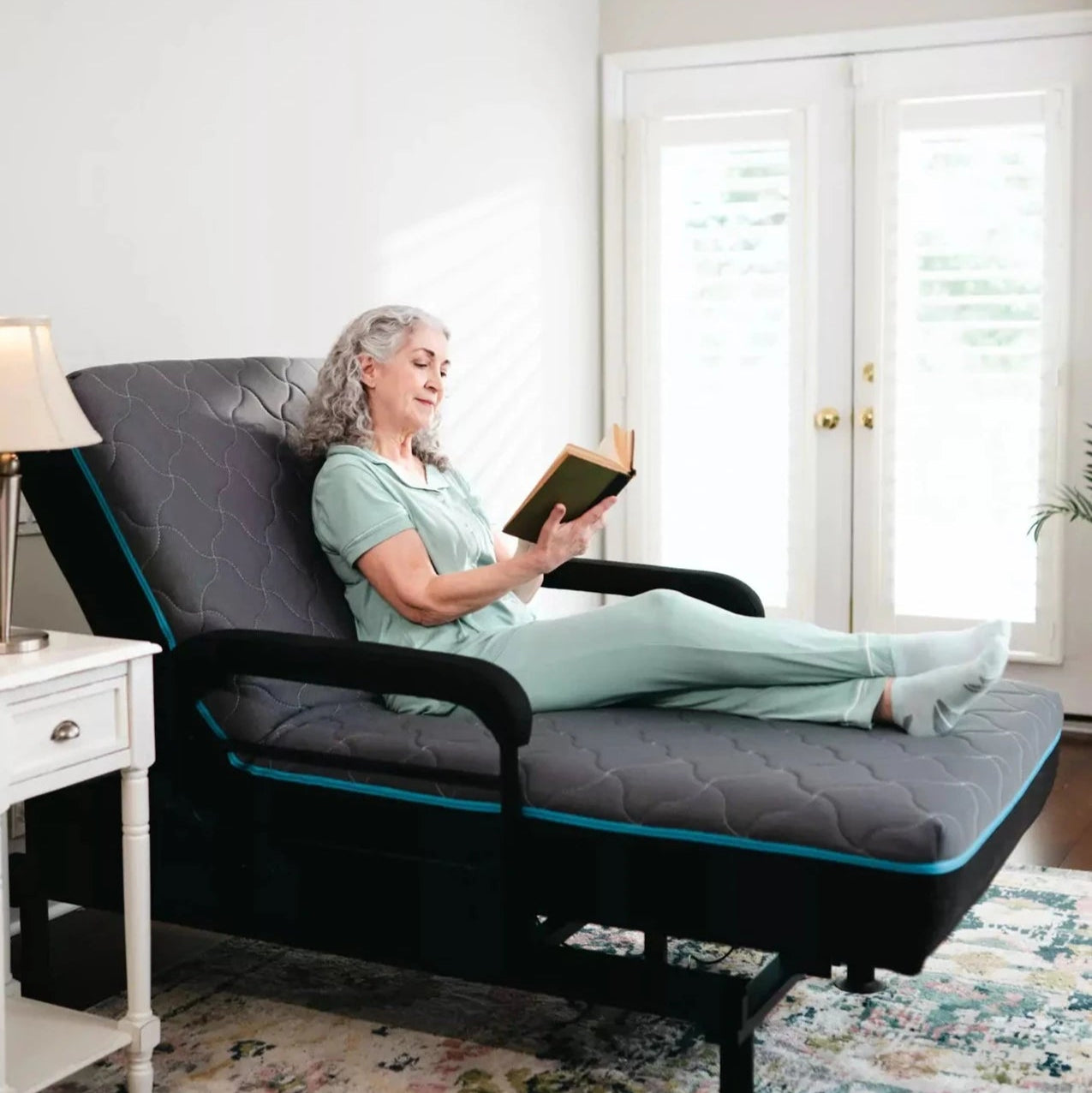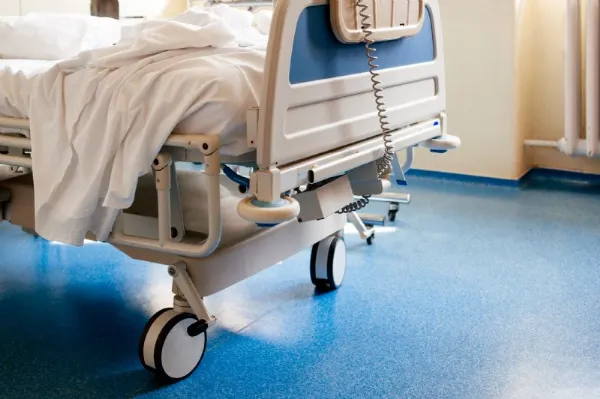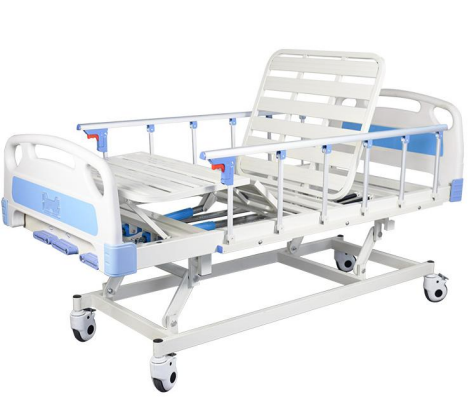The Ultimate Guide To Hospital Beds For Home Use
The Ultimate Guide To Hospital Beds For Home Use
Blog Article
The Only Guide to Hospital Beds For Home Use
Table of ContentsThe Single Strategy To Use For Hospital Beds For Home UseNot known Facts About Hospital Beds For Home UseGet This Report about Hospital Beds For Home UseHow Hospital Beds For Home Use can Save You Time, Stress, and Money.Getting The Hospital Beds For Home Use To WorkIndicators on Hospital Beds For Home Use You Should KnowFacts About Hospital Beds For Home Use Revealed
There are three primary kinds of hospital beds: handbook, semi-electric, and fully-electric. Nonetheless, even more sorts of clinical beds exist and they are listed here. These beds use hand cranks to readjust the bed's elevation and elevate and reduce the head and the foot. Hand cranks are usually located at the foot of the bed and call for a person that is physically with the ability of operating.
Semi-electric beds have an electric motor to raise and reduce the head and foot sections of the bed (hospital beds for home use). Full-electric beds have an electric motor that can increase the head and foot areas of the bed as well as the whole elevation and positioning of the bed.
Everything about Hospital Beds For Home Use
There are numerous kinds of health center beds, each made to fulfill details person demands. Here are some usual kinds: This is the most usual type of hospital bed, developed for basic clinical use.
Lower to the ground than a common bed. This kind of bed is made for larger people, with a larger structure and greater weight capability than a basic bed.
This sort of bed is created for critically ill people that require open monitoring and specialized clinical devices such as ventilators and infusion pumps. This kind of bed is made for usage throughout labor and shipment, with flexible positions and functions to sustain the mom and infant throughout the birth procedure.
About Hospital Beds For Home Use
Numerous function and the accessories execute broadening traction to different parts of the vertebra and the extremities without relocating the human body. These are simply a couple of instances of the types of hospital beds readily available. The specific sort of bed utilized will certainly rely on the patient's condition, clinical requirements, and various other elements.
Here is things you need to understand. A one-function medical facility bed is a clinical bed that enables an individual to relocate just the head or foot section up or down. A 2 function hospital bed normally refers to a sort of clinical bed that has 2 flexible features to aid individuals in healthcare facilities or treatment centers.

Hospital Beds For Home Use for Beginners
A 7-function ICU bed is a sort of medical bed that gives numerous adjustable functions to sustain seriously sick patients in a critical care unit (ICU) (hospital beds for home use). The seven features typically include: Backrest adjustment: The backrest can be changed to different angles to assist the person rest up or relax pleasantly
Elevation modification: The bed can be raised or lowered to make it less complicated for individuals to enter and out of bed, and for caretakers to provide treatment. Trendelenburg placement: The whole bed can be slanted to advertise blood circulation and blood circulation in the body. Reverse Trendelenburg setting: The bed can additionally be slanted in the opposite direction to promote blood flow and flow in the upper body.
While more economical than electrical models, these beds require exertion for modifications. The major advantages of hands-on beds are their cost and dependability, as they don't depend on electrical power. The requirement for hand-operated initiative can be a limitation in circumstances where quick adjustments are needed or where caretakers encounter physical challenges.
The Best Strategy To Use For Hospital Beds For Home Use
Semi-electric health center beds provide an equilibrium of guidebook and electrical controls. These beds provide a perfect middle ground between manual and completely electrical choices, providing ease of use without the full price of electric designs.
Semi-electric beds are fit for individuals who require modest modifications to the head and foot sections however can manage without frequent height changes. This makes them an affordable option for those looking for comfort and comfort without the demand for continuous repositioning. Completely electrical healthcare facility beds feature electric controls for seamless changes basics to the elevation, head, and foot areas.
Specialized medical facility beds, such as ICU beds, long-term treatment Related Site beds, and bariatric beds, are meticulously developed to address specific medical requirements. These beds provide customized take care of varied client teams, improving both end results and convenience. In the adhering to areas, we will explore the main types of specialized healthcare facility beds, detailing their particular benefits and applications.
With years of experience in making electrical direct actuators - hospital beds for home use and close cooperation with the healthcare market, TiMOTION is well-positioned to offer trustworthy medical care solutions. Our up and down incorporated company takes care of every step of the manufacturing process, from layout to actuator assembly, guaranteeing we provide exceptional value and customized remedies customized to your specific requirements
The Hospital Beds For Home Use PDFs

To learn even more regarding incorporating these modern technologies into your items, call us today. Additional reading:.
Information is sourced from the Medicare Cost Record.

The Ultimate Guide To Hospital Beds For Home Use
A medical facility bed is a bed developed particularly for medical objectives. It is not only a location for patients to rest, but additionally a platform for medical operations. Unlike common home beds, hospital beds generally have flexible features, which can facilitate clinical staff to make different adjustments according to the demands of patients, such as changing the height, inclination, and assistance angle of the back and legs of the bed.
Report this page